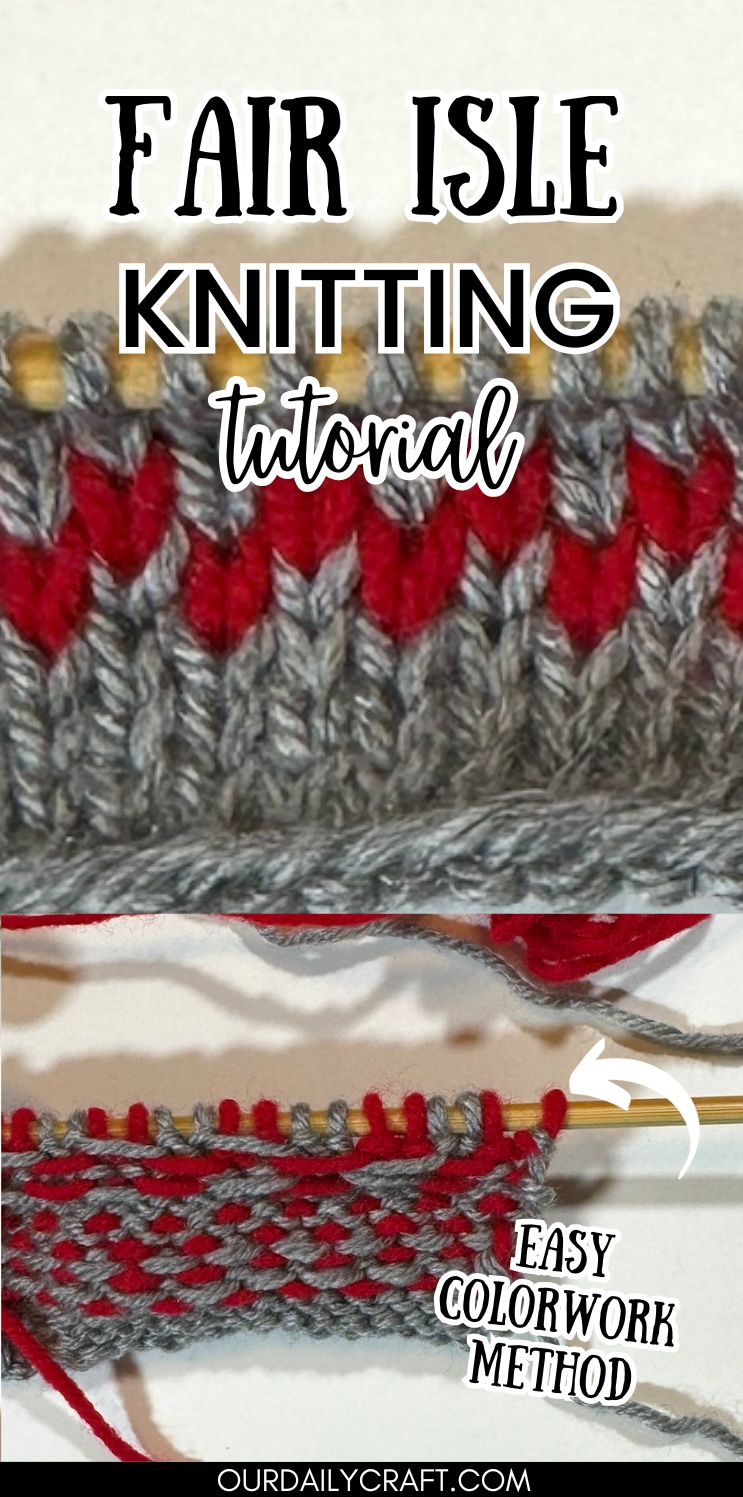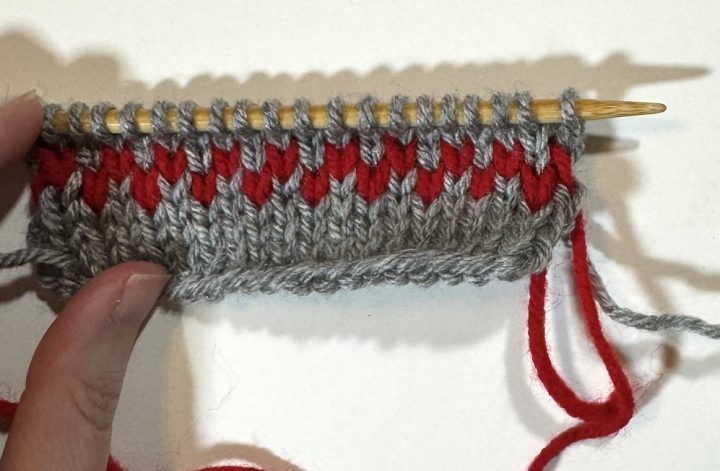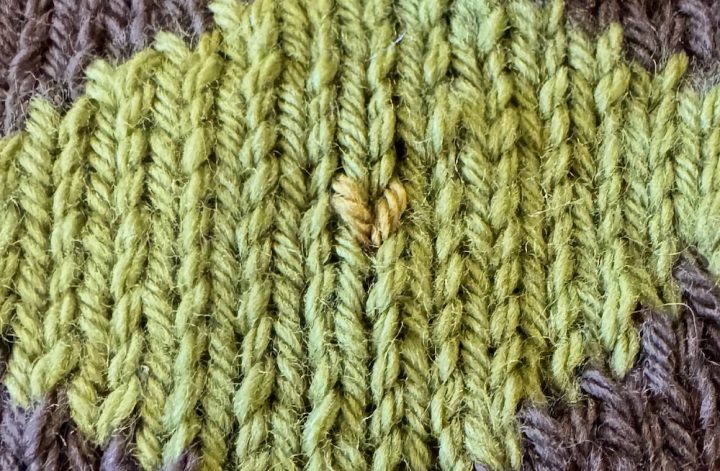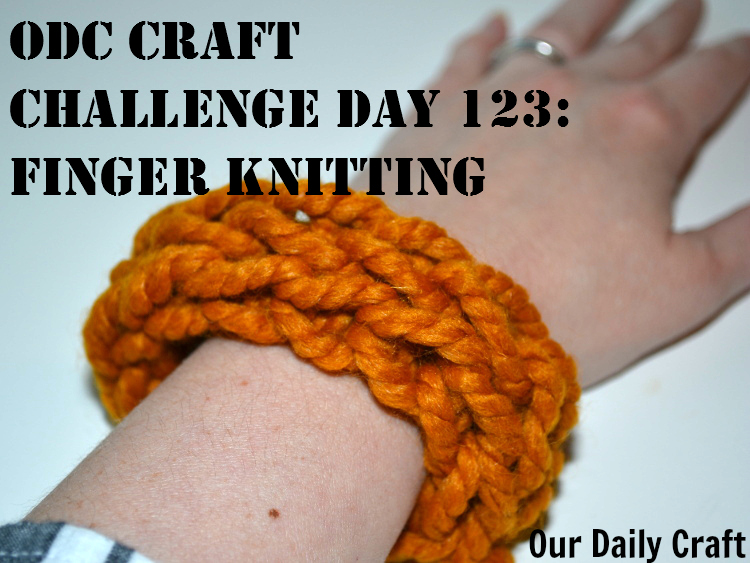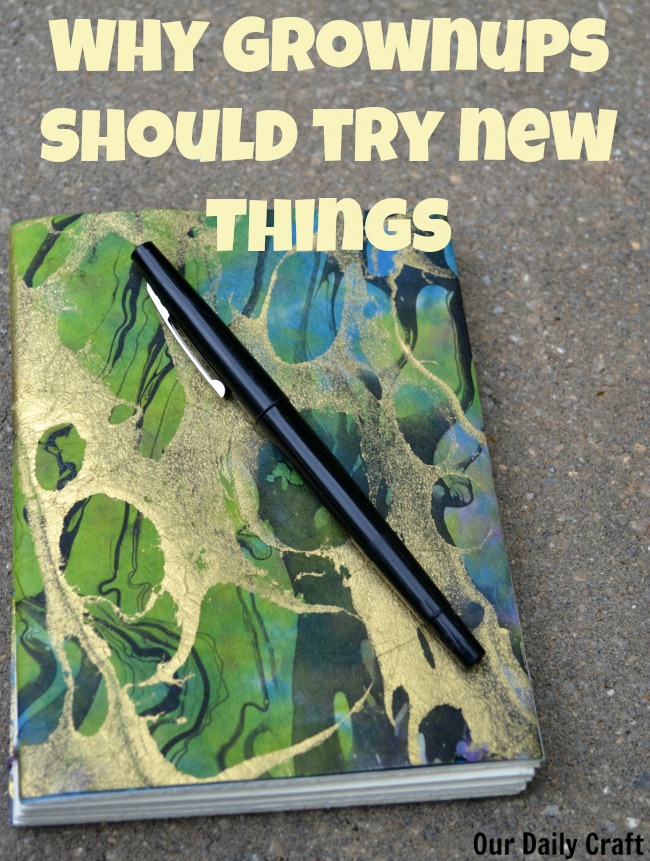Affiliate links may be included for your convenience. View our privacy and affiliates policy for details.
Fair Isle knitting, or stranded knitting, is one of the most common ways to add color to a knitting project. It seems like it might be difficult, but it’s actually pretty easy, as this fair isle knitting tutorial will show.
Fair Isle Knitting vs. Stranded Knitting
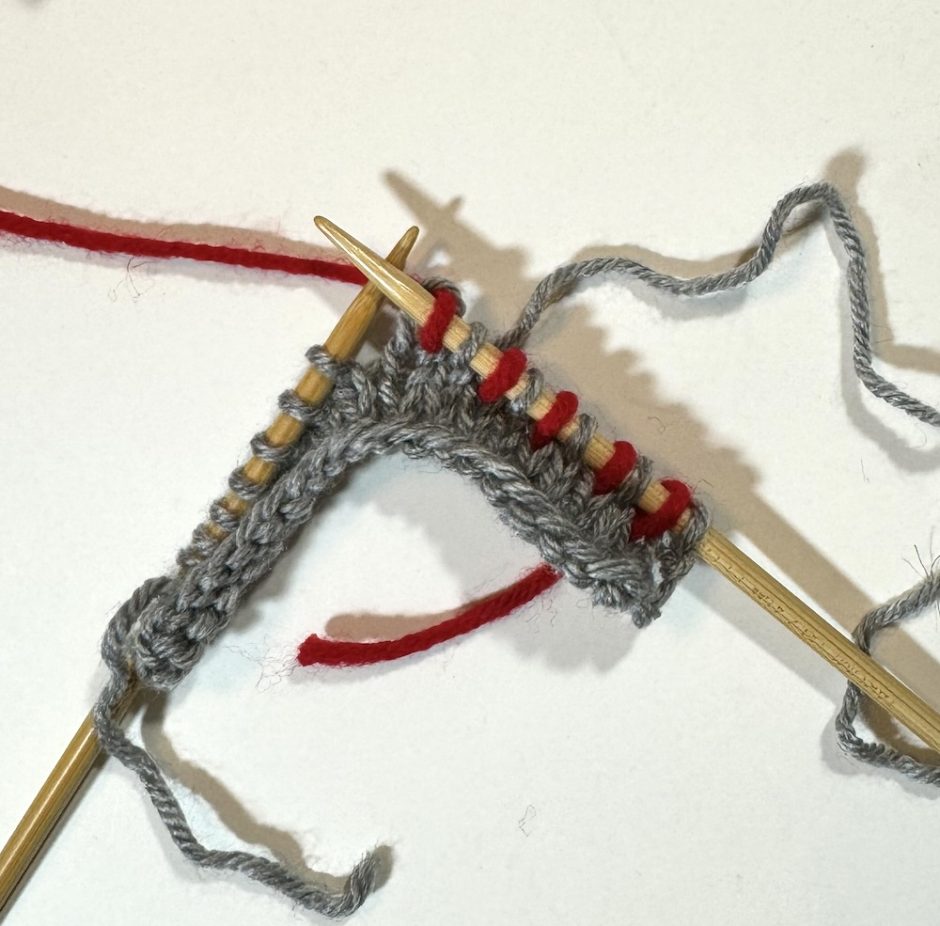
First to get a common question out of the way: Fair Isle knitting is actually a specific genre of stranded knitting that originated in the Shetland Islands (of which Fair Isle is one).
Fair Isle knitting describes colorwork motifs developed in that region. The patterns generally use five or fewer colors, with (most of the time) only two colors per row or round. Traditional patterns usually don’t have more than five stitches of a single color in a row so that the floats (that’s the strand of yarn you’re not working with that runs along the back of the work) don’t get too long.
Fair Isle is often used by knitters these days to refer to any kind of stranded knitting, though there are all sorts of designs that didn’t actually originate in Fair Isle or the Shetlands, and which don’t always follow these rules.
Characteristics of Fair Isle or Stranded Knitting
Fair Isle motifs are generally small, often geometric and symmetrical patterns that are repeated across a piece of knitting. The colors may change horizontally and vertically as you knit.
These patterns can be worked flat or in the round. The knit fabric produced is warmer than single-color knitting because the floats make the fabric twice as thick. This makes it great for winter accessories and sweaters.
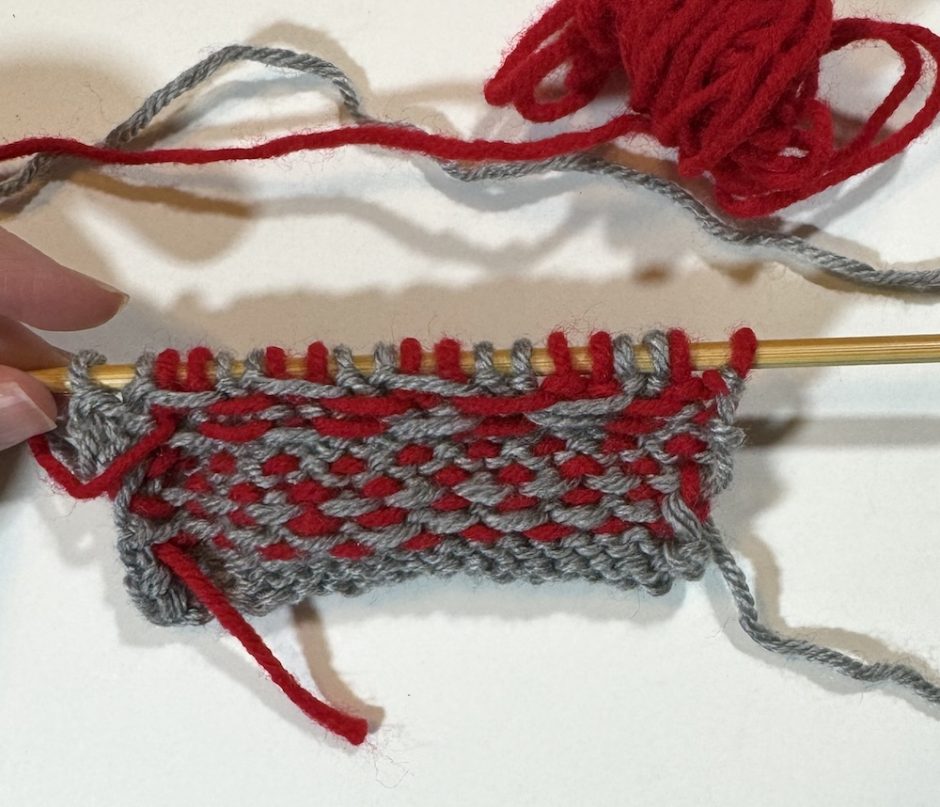
Fair Isle knitting designs are shown in a chart, with blocks of color indicating where different colors should be used in the pattern. Charts are generally worked from the bottom up, from right to left on right-side rows and from left to right on wrong-side rows. If you are working in the round, each round is worked from right to left on the chart.
If working a Fair Isle garment in the round, you may be instructed to work a few extra stitches in your tube where the sleeves of your garment would go (or up the middle front to make a cardigan). These stitches are cut after the knitting is done to make an opening. This is known as steeking and it’s an advanced move, but a very cool thing to try.
In general, Fair Isle is considered easier than intarsia, mostly because you’re working with fewer strands of yarn at a time. But the motifs you can do with stranded knitting are also smaller.
Fair Isle Knitting Tutorial
To start learning to work with two strands of yarn at once, you can try knitting one stitch with one color and one with the next color, repeating across the row.
Here I cast on 20 stitches in worsted weight yarn on a size 7 US/4.5 mm knitting needle. I worked three rows in color A just to have a base.
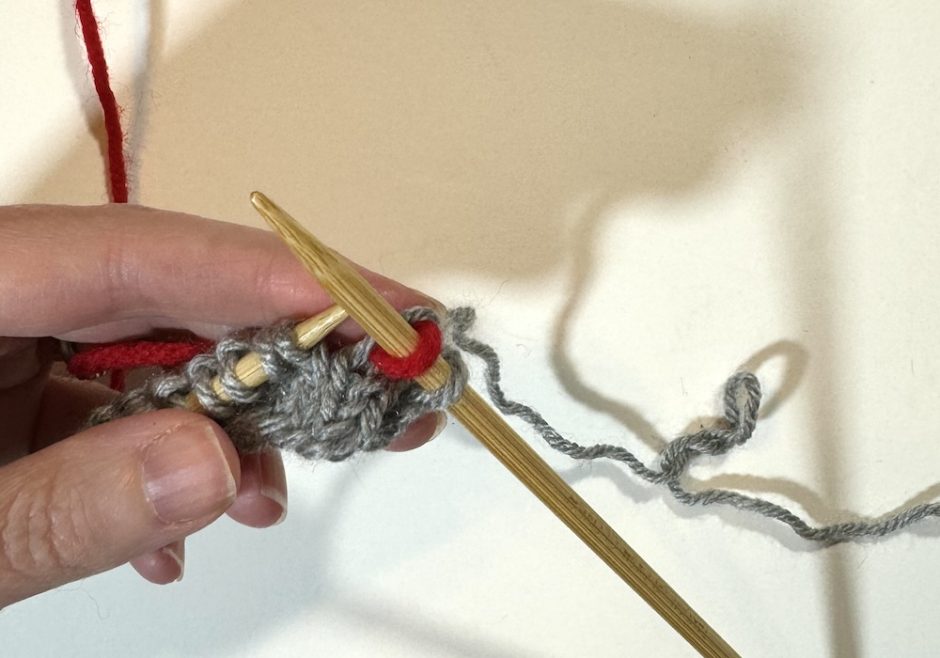
Work 1 stitch in color A. Leave a tail for weaving in and work 1 stitch in color B.
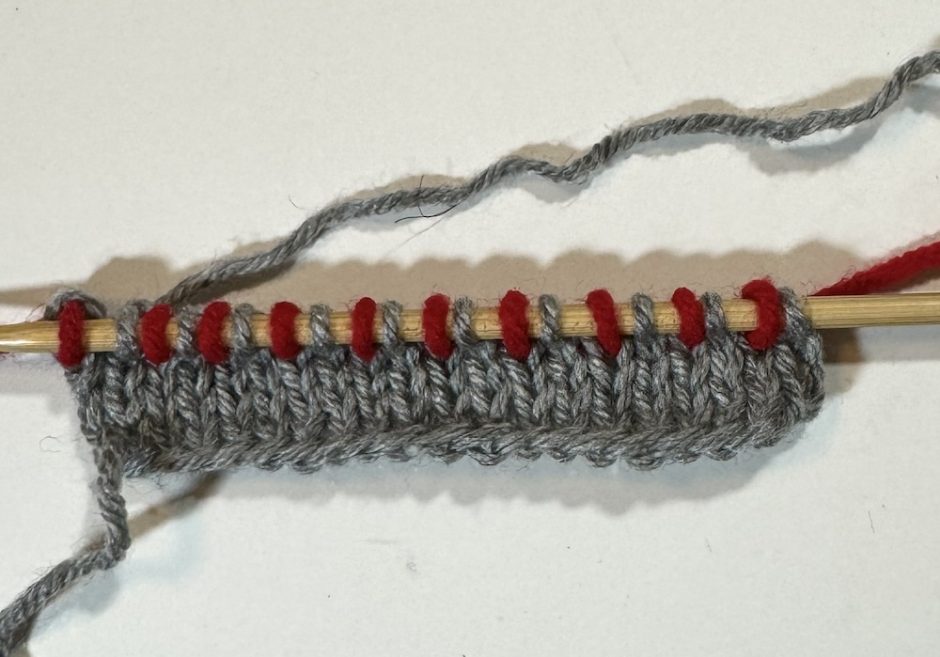
Repeat these two steps across the row. When changing colors every stitch, you don’t have to think much about yarn management, just keep knitting across and don’t pull your yarn tight as you make the stitches.
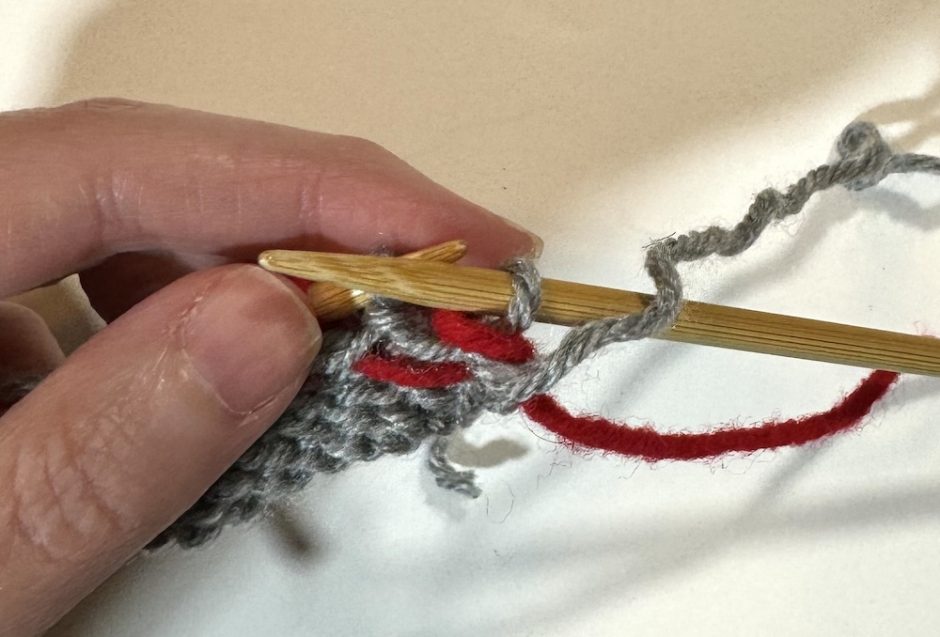
Since we’re working flat here, we’ll do the opposite colors in purl on the other side. So we start with a purl in color B.
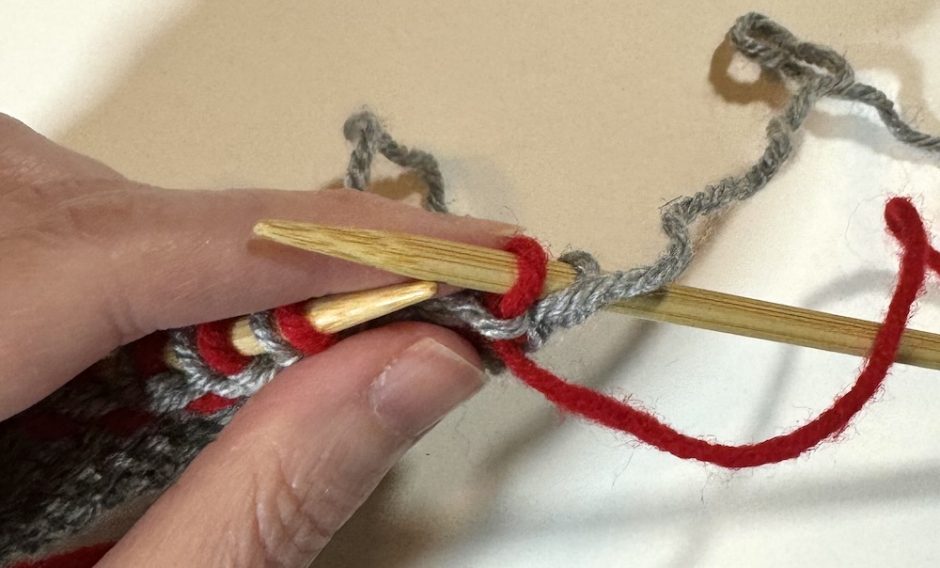
Followed with a purl in color A.
Again you can just deal with the yarn however you like here, but in the next section we’ll talk more about yarn management.
If you’re totally new to Fair Isle knitting you can repeat these two rows a couple of times before moving on.
Yarn Management in Fair Isle Knitting
No Fair Isle knitting tutorial would be complete without talking about yarn management. Because you’re working with two strands of yarn in each row, you’ll need to figure out how you like to manage your yarn. There are a few different options.
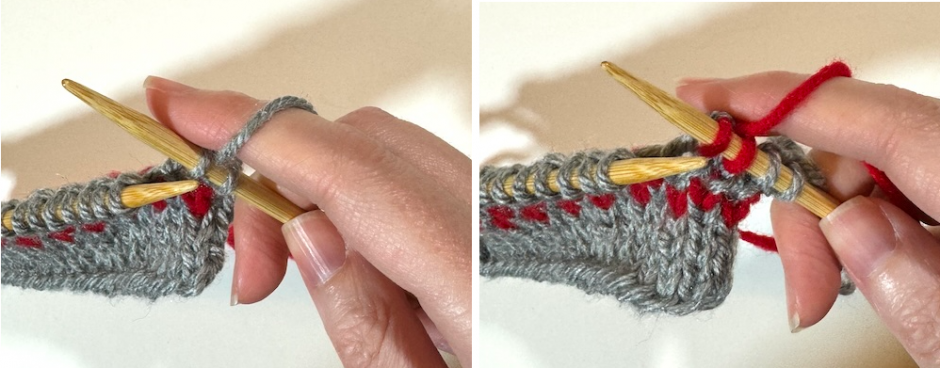
You can pick up color A, work the stitches you need to, drop it, pick up color B and work with it and repeat.
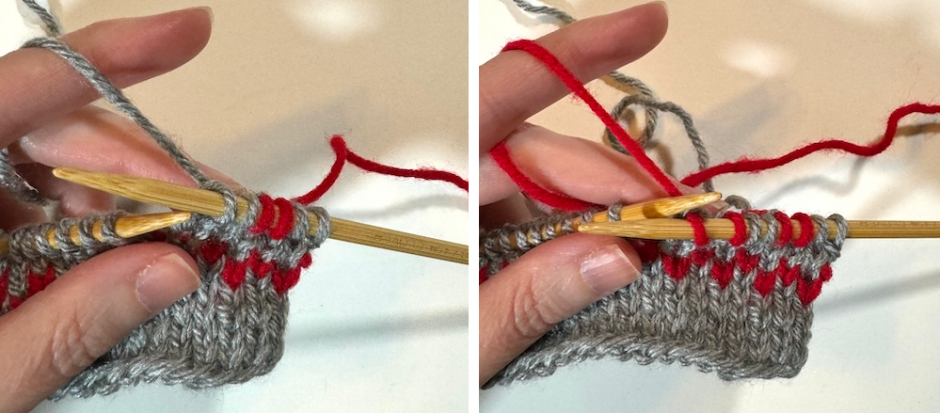
You can do this working with the yarn in your right hand or your left hand. If you work this way you want to make sure you’re picking up the new yarn in the same way each time so your yarns don’t get twisted. Generally that’s done by having one ball to the right and one to the left consistently.
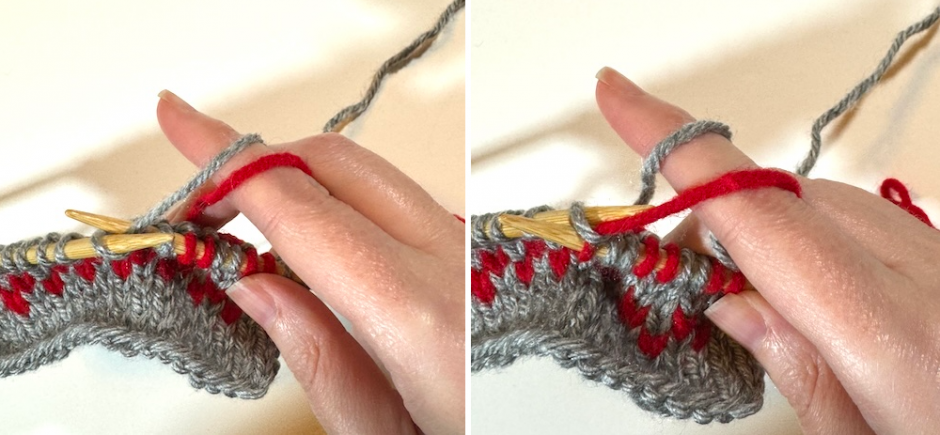
Or you can hold both yarns in your right hand and just grab the one you need for a particular stitch.
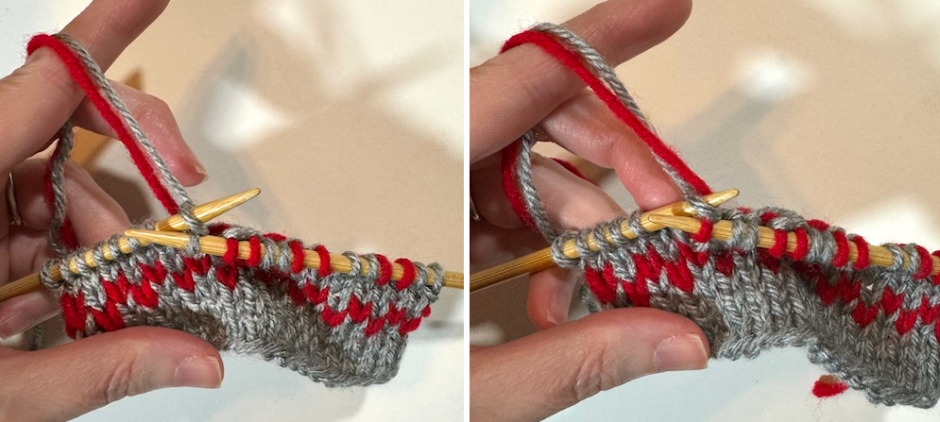
Of course you can do that with both yarns in your left hand, too. For both of these I’m holding both strands on the same finger, but you can also put them around different fingers if that’s easier for you.
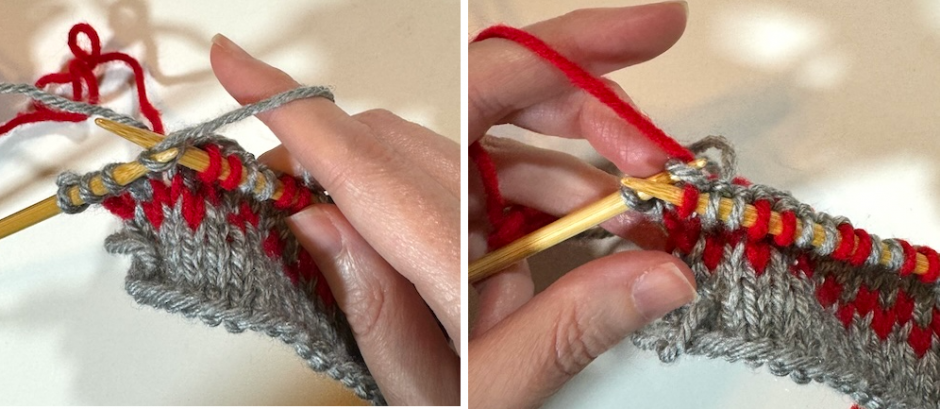
Finally, the way I like to do it is to hold color A in my right hand and color B in my left so I can knit easily from either one whenever I need it. This keeps the yarn neat at the back, too.
When it comes to which color goes where, it doesn’t really matter as long as you are consistent. But the yarn that comes from the left (whether on the left side of your finger, or working with your left hand while the other is worked with the right) will become more visually dominant in the fabric.
Most of the time this isn’t super obvious, but you’ll want to stay consistent through a project, especially if you’re knitting a pair of things.
Dealing with Floats
The main characteristic of stranded knitting is that you’re carrying the strand of yarn you aren’t working with across the row to where you need it again. So a big part of your success with Fair Isle knitting is making those floats or strands the best they can be.
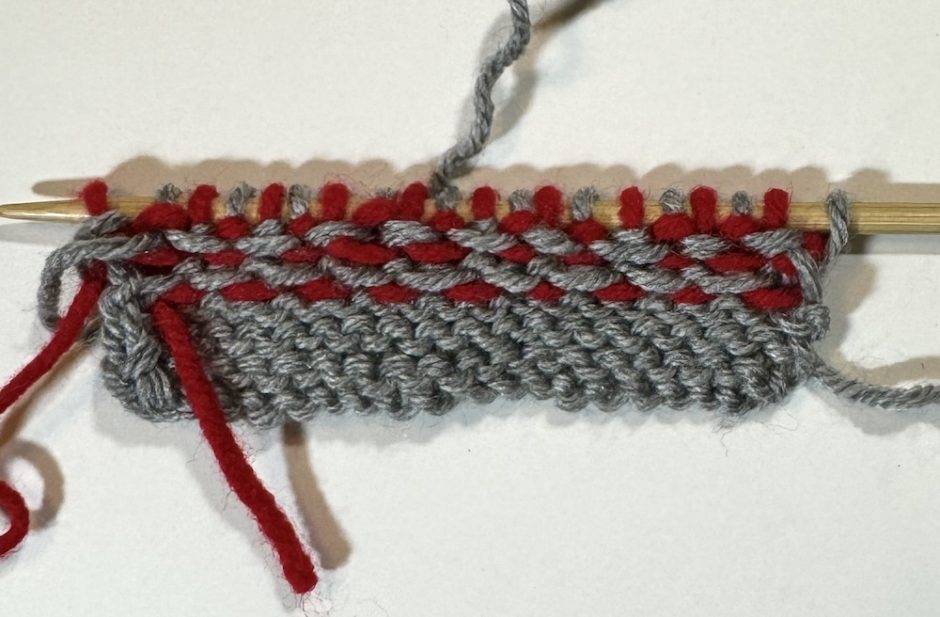
If you pull too tightly, it can distort the fabric and keep it from being as stretchy as you would like. Too loose and the back of your work is a mess, with floats you can catch on your fingers when you try to wear a garment.
It’s really a matter of practice to know how your floats should look, but it’s generally better to make them looser than tighter. If yours are coming out really tight, make you sure spread out the stitches you just knit a little bit before you bring up the next color to work with again. You can also knit the first stitch of each color a little more loosely than normal.
Above I said traditional Fair Isle knitting patterns usually don’t have more than five stitches of a single color before changing colors, and that’s because of the floats. If the floats are too long they’re also easy to catch on, even if your tension is right.
If your pattern has sections of one color longer than five stitches, you might want to trap the float to make it secure on the back.
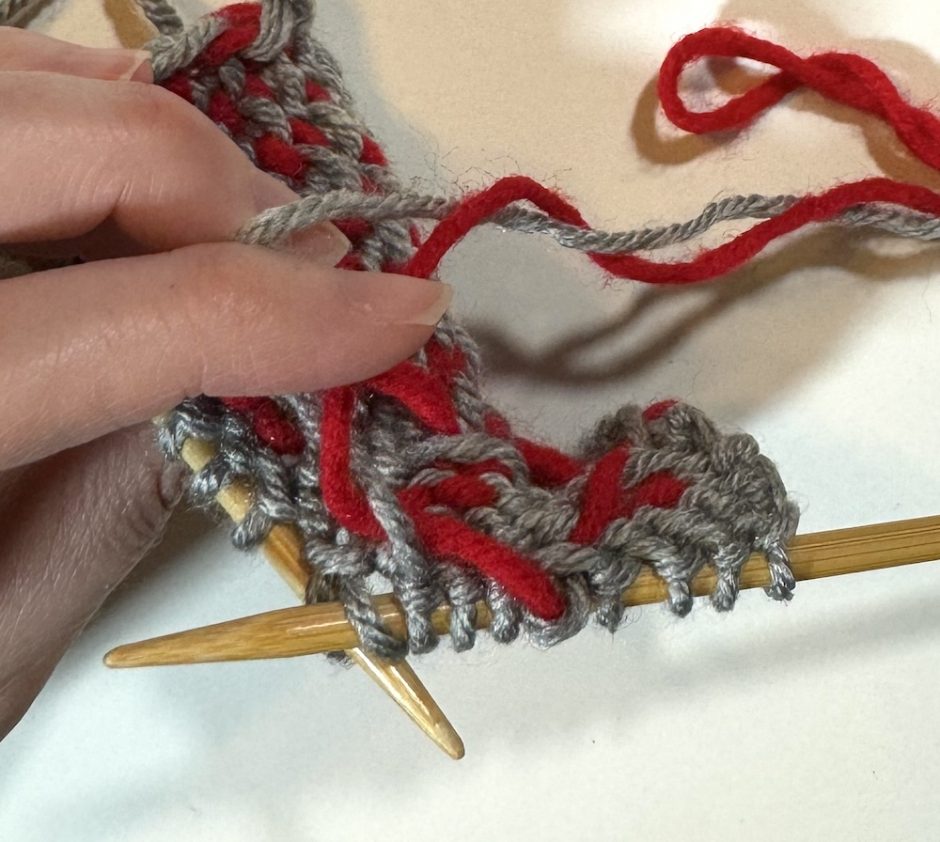
To do this, when you’re knitting a stitch in the color you’re working with, place the yarn for the color you’re not working with in front of the yarn you are working with before you knit the stitch. This holds the stranded yarn in place so the float isn’t hanging on the back.
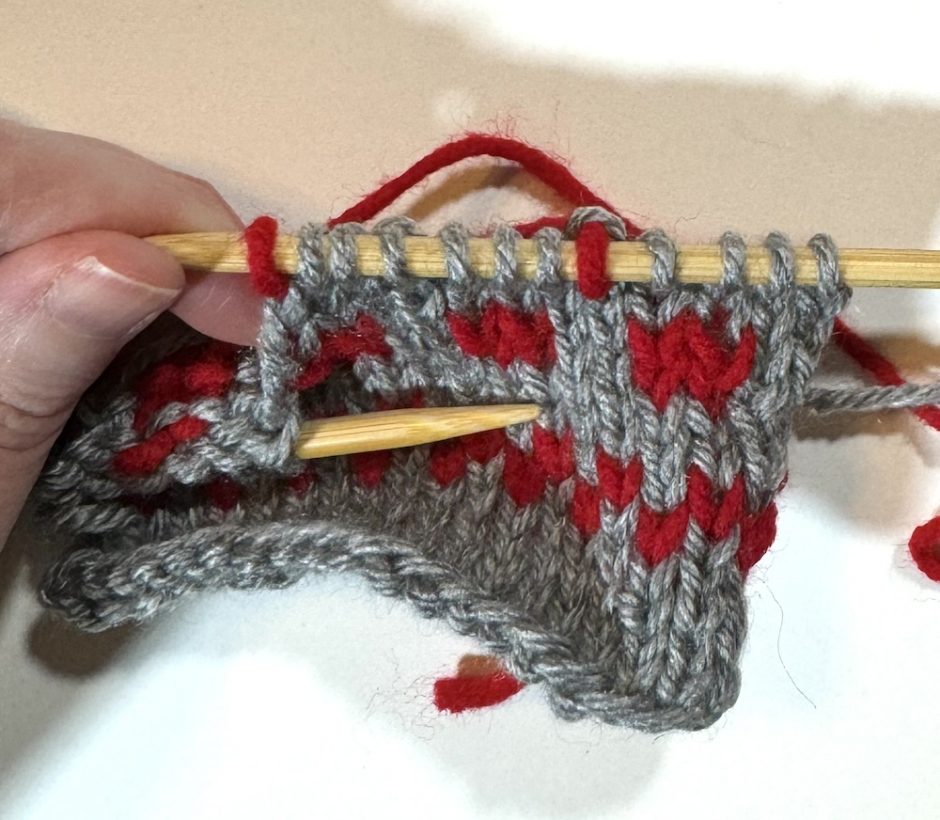
Then just go on and when you need the second color, pick it up and work as usual.
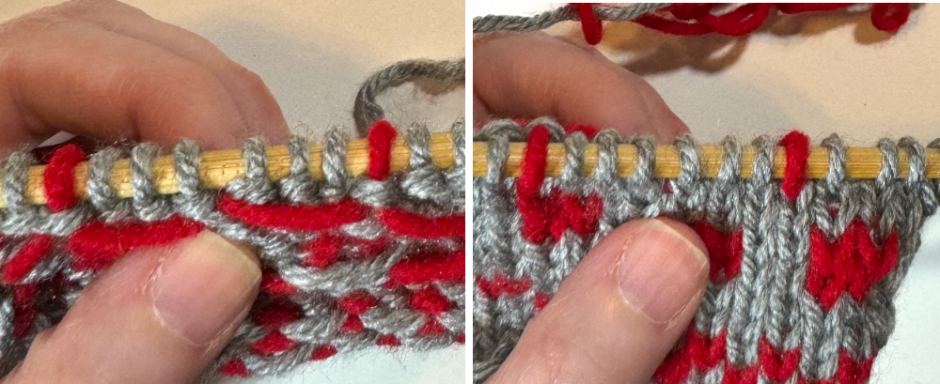
This is how the trapped float looks on the front and the back. Sometimes with very high contrast yarns (like black and white) the trapped float will be more visible on the front, but most of the time you can’t really see it.
Easy Fair Isle Knitting Patterns
Now that you’ve read through this Fair Isle tutorial, are you ready to give it a try for yourself? Here are a few easy stranded knitting patterns to try.
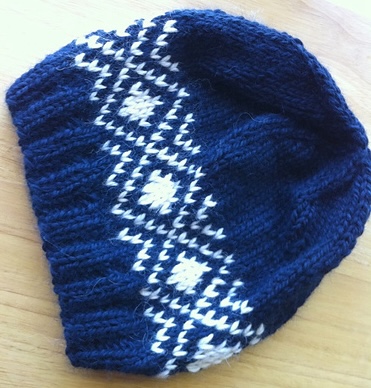
If you’re comfortable working in the round, Winter’s Coming by C-Lo is a great first stranded knitting project. It’s worked in bulky yarn, and the band of colorwork doesn’t have any shaping in it. This is a free pattern available on Ravelry.

For a bolder pattern that’s still a classic, grab the super bulky Snowflake Hat from Northroad Knits on Etsy. This one is super fast to knit and looks great with just about any background color.

The Two Strands Headband from Two Strands is a free knitting pattern that was designed to be a great first Fair Isle knitting project. The chart is shown in lots of different colors so you can pick one that looks like your yarn colors or just use whatever colors you like.

The Wood Folk Fingerless Mittens from Ways of Woodfolk use three colors, but only two are involved in the Fair Isle pattern. They’re worked in worsted weight yarn in the round and come in two sizes for adults.
